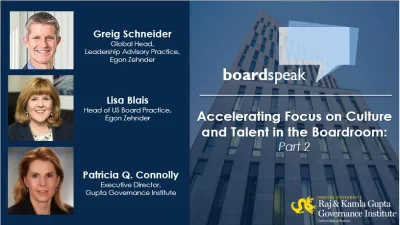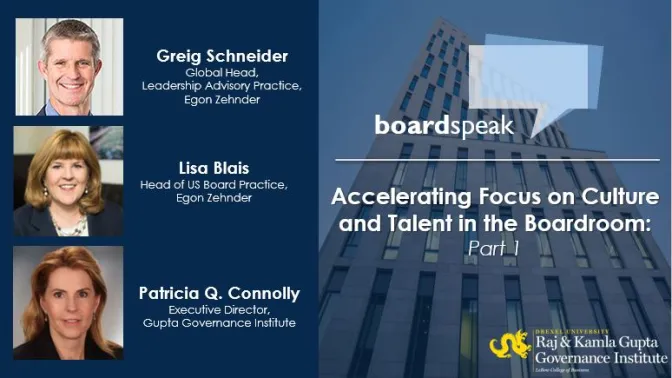
5 Tips for Acing Your Case Interview Featuring Accenture
You walk into an interview and everything seems normal — until you’re handed a sheet of paper and told you have 30 minutes to solve a problem and explain your reasoning. What you thought would be a standard interview has now become a case interview.
Case interviews are quickly becoming an integral part of the job candidate selection process, especially for consulting, strategy and technical positions.
In a workshop with LeBow undergraduate and graduate students, Michael F. Reilly, MBA ’86, director at Accenture Strategy & Consulting, said he regularly uses case interviews to identify top candidates for the company. This type of interview, he says, is the best way to assess how candidates problem solve, as well as how they communicate and advocate for their ideas effectively.
Here are Reilly’s top five tips for making a positive impression during a case interview:
1. Listen. The number one thing that stops candidates from performing their best, Reilly says, is letting their nerves prevent them from listening to the problem and assessing the details. Though nerves may take hold when faced with a complex problem, paying attention to the key details could make or break the rest of the process.
“In a case interview, your first job is to listen to what I’m saying,” Reilly says. “Don’t think about how you’re going to solve it. Don’t try to figure out how you’re going to answer it yet. Don’t try to jump ahead and say, ‘The answer is five.’ Listen, take notes and confirm.”
2. Ask the right questions and share your assumptions. When presented with a case, candidates will often need more information to get a better scope of the problem they’re facing. In some interviews, you may have the opportunity to ask additional questions; however, if the opportunity isn’t there, Reilly suggests clearly stating all of your assumptions while solving the problem.
“It’s helpful to frame your first question as, ‘As I understand it, the problem we’re trying to figure out is this,’” says Reilly, followed by confirming the details of the case.
3. Explain your logic. Case interviews are all about assessing your process. Similar to Tip #2, Reilly recommends clearly documenting all logic and laying out your steps to solving the problem. Whether it’s an issue tree or the four p’s, it’s important that candidates share the framework they’re using, he says. This helps interviewers assess a candidate’s approach and examine their conclusions, regardless of their solution.
4. Refine your approach. While case interviews test your ability to solve a problem and think critically, they also provide employers with the opportunity to gauge how you will respond to team dynamics and high-pressure situations. Reilly stresses the importance of being intentional about how you present. Whether you’re defending your solution or incorporating new information from the client, it’s important to do so with poise, tact and professionalism.
“The whole point of putting you through multiple interviews and making you solve these cases is to figure out if you’re right for the team,” says Reilly. “We’re trying to figure out if you’ll do well in front of a client. We’re trying to figure out if you’re the right person to be sitting next to us.”
5. Don’t die on your sword. Often, a case interview ends with an examination of logic, process and results. This gives a candidate the chance to not only explain their thinking throughout the process but to defend their approach in front of a panel of potential colleagues. Rather than defending your solution as though it is the only possible answer, Reilly says to keep an open mind to other solutions and answer challenging questions calmly and professionally.
“If you do think you’re right, it’s okay to take a step back and explain: ‘I understand your point but I do think this is still the right way and perhaps we could test it,’” Reilly says. “That’s a safe way to do it. But if you just continue to force it and say, ‘I’m right,’ that’s not going to work because it won’t work in front of a client.”


